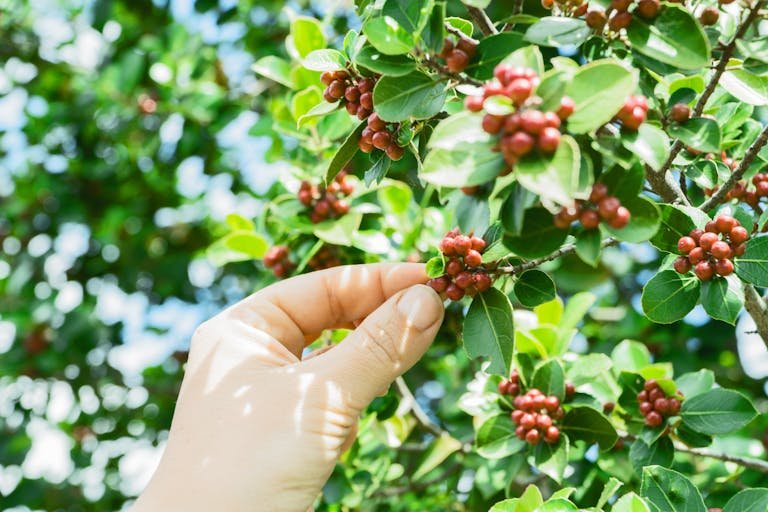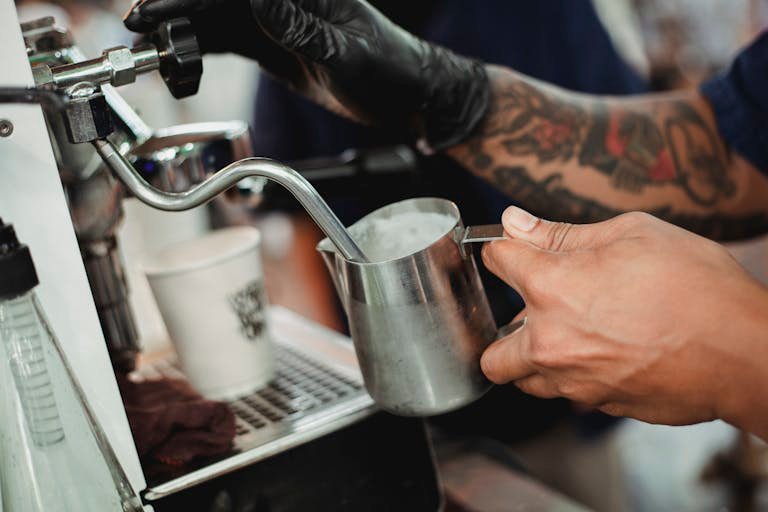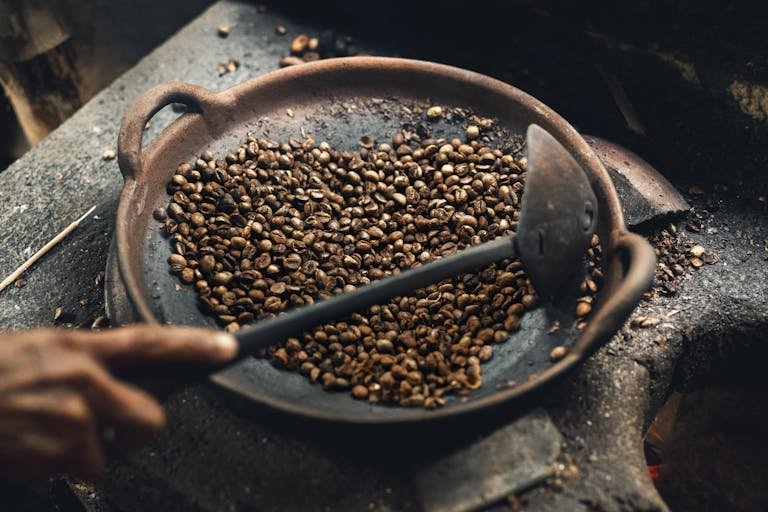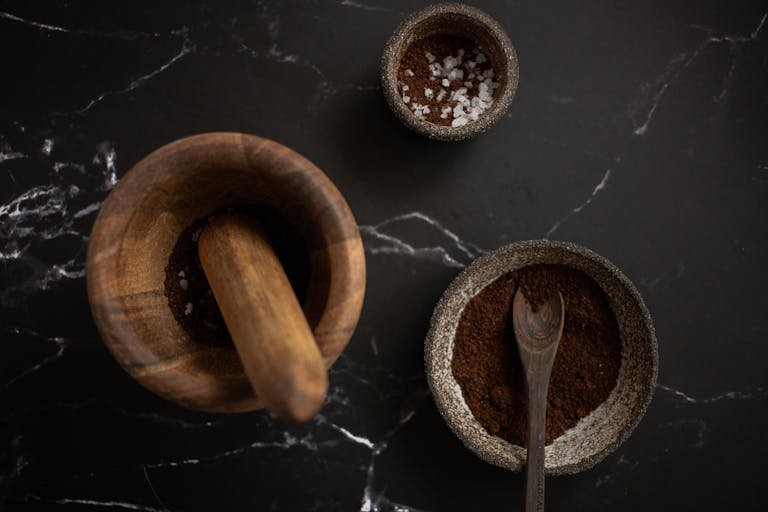Making the perfect cup of coffee starts with the right grind. For coffee enthusiasts, home baristas, and café owners, understanding the difference between conical and flat burr grinders is crucial. Each type has its benefits and limitations, influencing the flavor, consistency, and overall coffee experience. In this blog post, we’ll explore the essential differences, pros and cons, and practical considerations to help you choose the best grinder for your needs.
The Importance of Burr Grinders in the Coffee World
Burr grinders are a game-changer in coffee brewing. Unlike blade grinders, which chop beans unevenly, burr grinders crush coffee beans between two abrasive surfaces, known as burrs. This method ensures a uniform grind size, which is critical for consistent flavor extraction. Whether you’re brewing espresso or French press, a burr grinder can be the difference between a good and great cup of coffee.
The Role of Grind Consistency
Grind consistency directly affects how evenly coffee grounds are extracted during brewing. Uneven grounds can lead to over-extraction (bitter taste) or under-extraction (sour taste), spoiling the flavor profile. Burr grinders excel in providing consistent grind sizes, allowing for precise control over the brewing process.
Key Components of Burr Grinders
The main components of burr grinders include the hopper (where beans are stored), the burrs (which grind the beans), and the grind adjustment mechanism. Understanding these parts helps in making an informed choice when selecting a grinder.
Why Choose Burr Over Blade?
Blade grinders are often cheaper but can’t match the grind consistency of burr grinders. Burr grinders, whether conical or flat, provide a more precise and even grind, making them a preferred choice for serious coffee enthusiasts.
Understanding the Fundamental Differences Between Conical and Flat Burr Grinders
The debate between conical and flat burr grinders has long been a point of contention among coffee aficionados, with each type offering unique advantages and limitations.
How Conical Burr Grinders Work
Conical burr grinders feature cone-shaped burrs that grind coffee beans between a stationary outer burr and a rotating inner burr. The shape of the burrs allows gravity to assist in pulling the beans down through the grinding area.
How Flat Burr Grinders Work
Flat burr grinders use two flat, parallel burrs to grind beans. One burr remains stationary while the other rotates, crushing the beans with a shearing action. The coffee grounds are forced out between the burrs’ edges, resulting in a uniform grind.
Technical Differences
The primary technical difference lies in the shape and alignment of the burrs. Conical burrs are more efficient at gravitating beans toward the grinding area, while flat burrs require more mechanical force to push beans through the burrs.
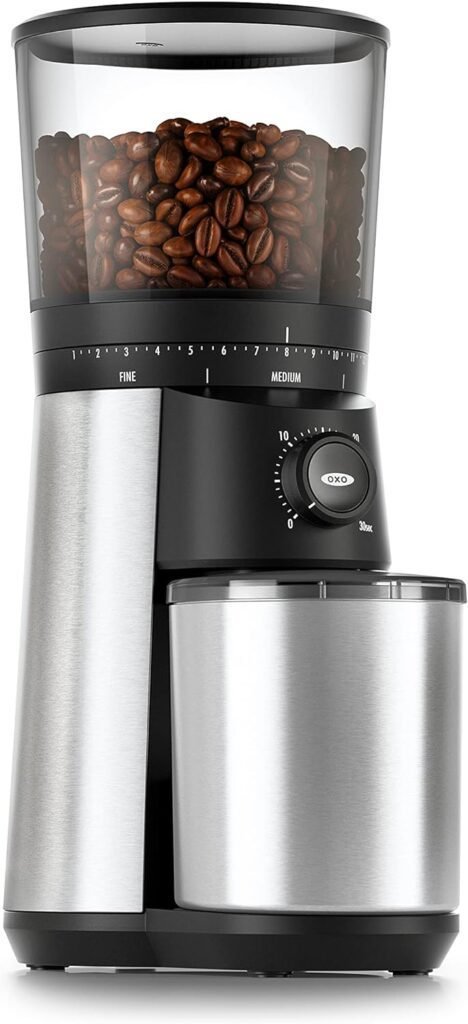
OXO Brew Conical Burr Coffee Grinder, Silver
Pros and Cons of Conical Burr Grinders
Conical burr grinders offer several advantages and some drawbacks that are worth considering.
Efficiency and Speed
Conical burr grinders typically operate at lower speeds, reducing heat generation and preserving the coffee’s natural flavors. Their design makes them more efficient, as gravity aids in feeding beans through the grinding area.
Flavor Preservation
Michael, a coffee roaster prioritizing quality and taste, shares, “Conical burr grinders are often favored for their ability to retain the natural flavors of coffee due to their cooler, slower grinding process.” This makes them ideal for those who want to capture the full essence of their coffee beans.
Cost and Maintenance
One of the main advantages of conical burr grinders is their affordability compared to flat burr grinders. Additionally, they are easier to clean and maintain, as their design reduces the likelihood of grounds getting stuck in the grinding mechanism.
Limitations
However, conical burr grinders may produce slightly less consistent grind sizes compared to flat burr grinders. This can be a concern for those seeking the highest level of precision in their coffee brewing.
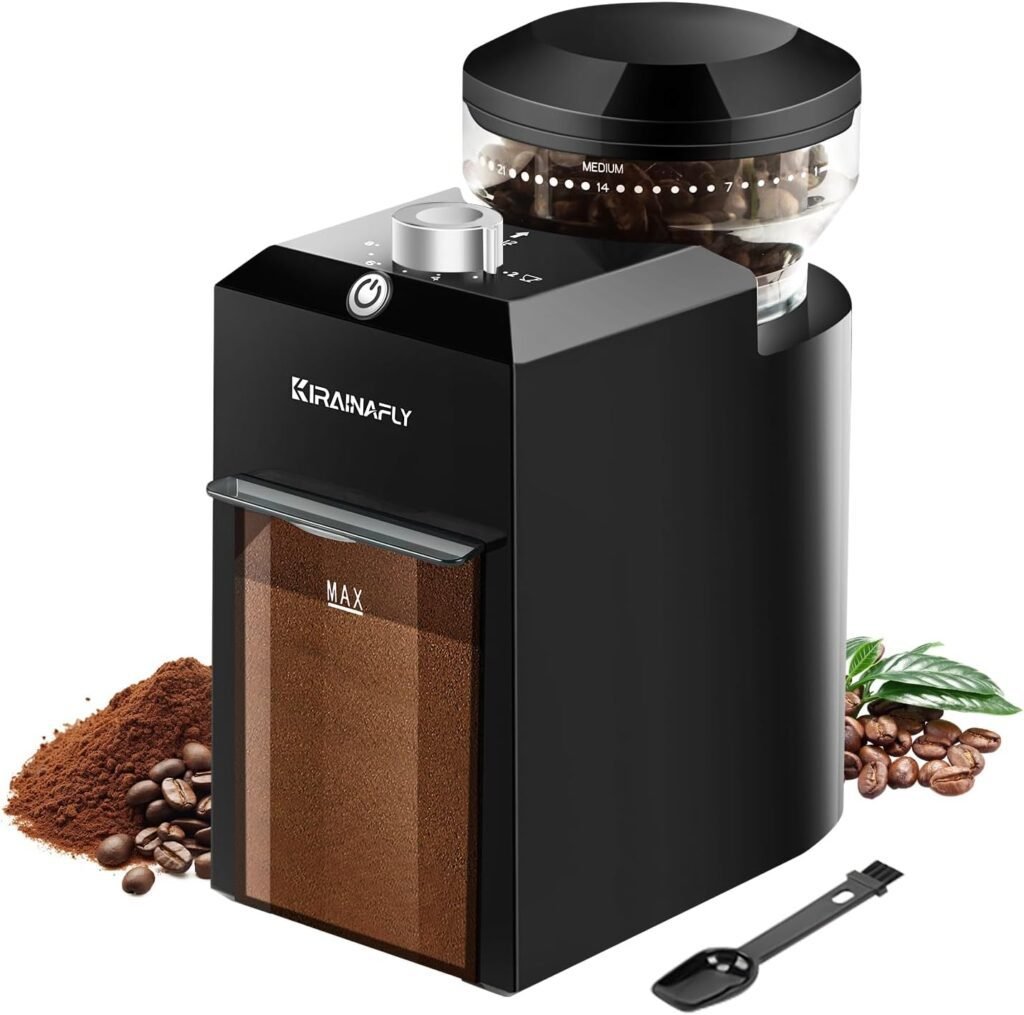
Flat Electric Burr Coffee Grinder, Adjustable Burr Mill with 28 Precise Grind Settings for French Press, Drip Coffee and Espresso, Coffee Maker (White)
Read Also: Cafe Au Lait: More Than Just Coffee
Pros and Cons of Flat Burr Grinders
Flat burr grinders are known for their precision but come with their own set of benefits and challenges.
Precision and Consistency
“When it comes to consistency, the flat burr grinder is unmatched in the precision it offers, making it the top choice for many specialty coffee shops,” notes Emily, a coffee consultant. Flat burrs produce uniform grind sizes, leading to even extraction and a balanced flavor profile.
Heat Generation
A drawback of flat burr grinders is their tendency to generate more heat during the grinding process. This is due to their higher rotational speed and the mechanical force required to push beans through the burrs. Excessive heat can affect the coffee’s flavor by causing premature extraction of oils.
Cost and Maintenance
Flat burr grinders are generally more expensive than conical burr grinders. They also require more frequent cleaning to prevent coffee grounds from accumulating between the burrs, which can affect grind consistency over time.
Noise Level
Flat burr grinders can be noisier than their conical counterparts, which may be a consideration for home baristas who prefer a quieter brewing process.
Real-World Comparisons: Performance, Consistency, and Grind Size Distribution
To provide a comprehensive comparison, let’s look at practical examples of how these grinders perform in real-world scenarios.
Performance in Different Brewing Methods
Conical burr grinders are versatile and perform well across various brewing methods, from espresso to pour-over. Their ability to grind at lower speeds makes them suitable for preserving delicate flavors in lighter roasts.
Consistency in Grind Size
Flat burr grinders excel in producing a consistent grind size, which is crucial for espresso and other methods requiring fine, uniform grounds. Sarah, a home barista, documented her experiment with both grinders and noted more consistent and flavorful results with the flat burr grinder, particularly in her espresso brews.
Grind Size Distribution
Grind size distribution refers to the range of particle sizes produced during grinding. Flat burr grinders tend to have a narrower distribution, meaning fewer fines (very small particles) and boulders (very large particles). This leads to more even extraction during brewing.
Practical Considerations for Coffee Enthusiasts, Home Baristas, and Café Owners
Selecting the right burr grinder depends on individual needs, preferences, and budget. Here are some practical considerations for different types of coffee lovers.
For Coffee Enthusiasts
If you’re passionate about exploring different coffee flavors and brewing methods, a conical burr grinder may be a great starting point. Its affordability and ease of use make it accessible for those new to specialty coffee.
For Home Baristas
Home baristas who enjoy experimenting with espresso and other precision brewing methods might prefer a flat burr grinder. Its superior consistency and ability to produce fine grind sizes enhance the quality of home-brewed espresso.
For Café Owners
Café owners looking to deliver top-notch coffee experiences should consider investing in a high-quality flat burr grinder. The consistent grind size and precision it offers ensure that each cup served meets the highest standards.
Read Also: Why is Coffee Cake Called Coffee Cake?
Conclusion
Choosing between conical and flat burr grinders ultimately comes down to your specific needs and preferences. Both types have their unique advantages and limitations, influencing factors such as flavor preservation, grind consistency, and cost.
To sum up, if you prioritize flavor retention and affordability, a conical burr grinder might be the better choice. However, if precision and consistency are paramount, especially for espresso, a flat burr grinder is worth the investment.
In the world of coffee, the choice between conical and flat burr grinders isn’t just about the grind size; it’s about understanding the impact on flavor extraction and the final quality of your brew. We hope this guide has provided valuable insights to help you make an informed decision.

